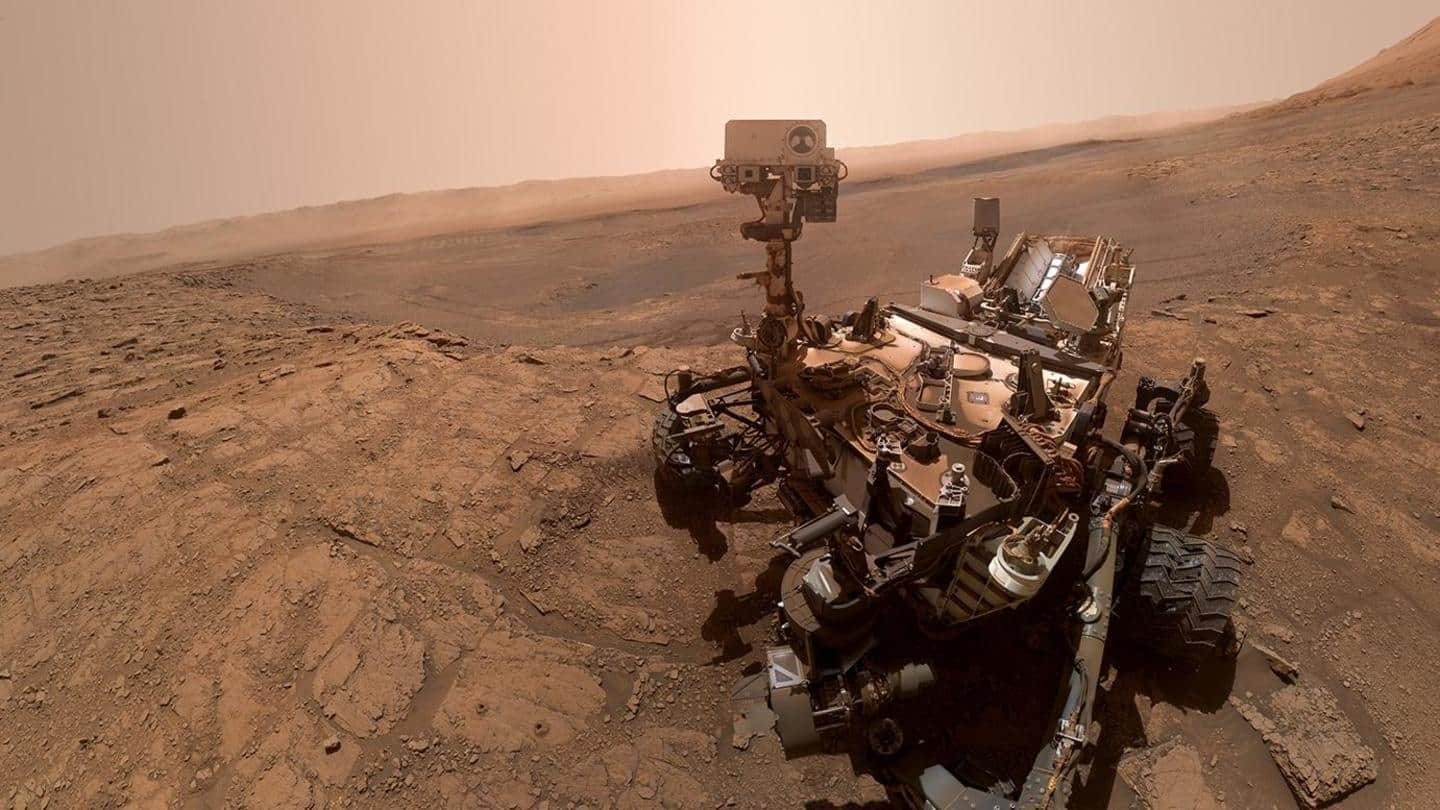
NASA celebrates 10 years of Curiosity Martian rover with selfie
What's the story
Mars has done the most to fuel our quest to find extraterrestrial life.
NASA's Curiosity rover is the manifestation of humanity's "curiosity" to find life on Mars. Celebrating its 10th anniversary, the organization has shared a selfie of the rover.
As Clara Ma wrote in her winning essay to name the rover, "Without curiosity, we wouldn't be who we are today."
Context
Why does this story matter?
Curiosity has been one of NASA's most important astrobiological missions to date. The valuable information it has sent our way since the beginning has massively improved our understanding of Mars.
There are age-related issues, but for the most part, the rover has aged like fine wine.
With three more years added recently to its lifetime, we can surely expect more from Curiosity.
Picture
The selfie was shot at Gale Crater
The Curiosity rover's time on Mars can be described in simple terms such as 10 years, 29km, and 41 rock and soil samples.
Celebrating its 10th anniversary, NASA shared a portrait of the rover shot by itself at the Gale Crater on Sol (solar day) 2082 or June 15, 2018.
The image was captured with the Mars Hands Lens Imager (Mahli).
Beginning
Curiosity landed on Mars on August 6, 2012
Curiosity's story began in 2003 when NASA's Mars Science Laboratory (MSL) mission was endorsed by the National Research Council.
Nine years, more than $2 billion, and a long list of complexities later, the rover touched down on alien soil at 11:02 am IST on August 6, 2012.
The rover landed at the dry and desolate Gale Crater located south of the Martian equator.
Progress
Curiosity drilled into its first rock in 2013
Curiosity had an active start to its life on Mars. The rover got its first chance to drill into a rock in February 2013. It uncovered traces of sulfur, nitrogen, hydrogen, oxygen, phosphorus, and carbon in the hole.
The rover's search for signs of life on the planet received another boost when its SAM (Sample Analysis at Mars) tool revealed organic molecules.
Discovery
The rover determined the presence of liquid water on Mars
Curiosity has had a busy decade on the red planet. Its most important discovery came when it determined that liquid water, as well as the chemical building blocks and nutrients needed for supporting life, were present for at least tens of millions of years at Gale Crater.
Now, its radiation sensor measures the amount of high-energy radiation future astronauts would be exposed to.
Journey
Curiosity is now climbing up the Mount Sharp
Curiosity is now driving up Mount Sharp mountain. It can navigate on its own with the help of its Mastcam.
The rover is on its way to a sulfate-rich region. The Curiosity team plans to spend the next few years in this area.
They have special targets such as the Gediz Vallis channel, which may have formed during a flood at Mount Sharp.
Aging
The rover's wheels are punctured
Curiosity's mission was supposed to last for 687 Earth days. It's been 10 years now, and the rover is showing signs of aging.
The wheels of the rover are punctured and are monitored every 1km to determine their health. Engineers usually don't choose routes with sharp rocks to avoid further damage.
It has also had to deal with short circuits and multiple computer reboots.